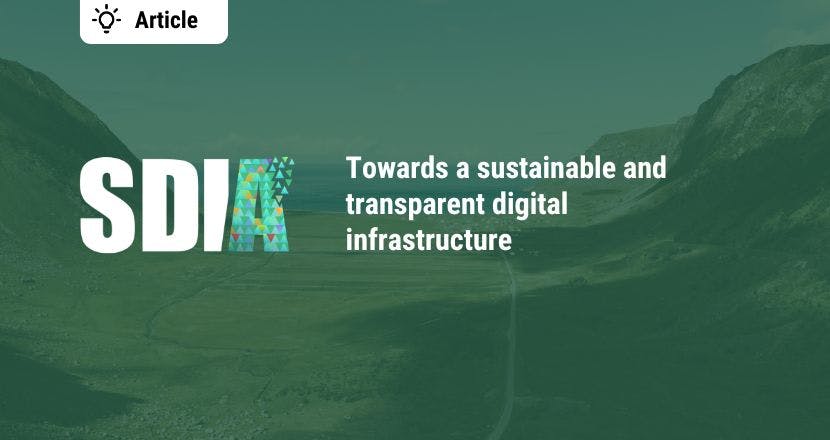Max Schulze was invited to the Policy Dialogue 'Greening ICT: What can EU do?' by the European Policy Centre and reflected on the environmental footprint of software, the impact it creates, and the importance of addressing power consumption and embedded emissions. You can read his speech below or watch the full recording of the event here.
Introductory remarks
No data centers are designed and built, networks put in place, or servers manufactured without software demanding it. Therefore, software needs to take responsibility for the environmental impact it creates through the infrastructure it requires. A responsibility that can only exist through transparency.
Software needs to make at least two things transparent: 1) the power consumption it is responsible for, 2) the embedded emissions in the underlying infrastructure — beginning with servers. I am very glad to see that the Greens/EFA group is conducting a Lifecycle Assessment as part of its recently announced study.
Digital products and services are comprised of software. Currently, customers purchasing these digital offerings cannot make a decision based on environmental sustainability, because the information is simply not there. Transparency regarding the environmental impact will not happen by itself. Many digital companies either ignore the issue or only focus on the electricity aspect, with the majority opting to create an alternative narrative in which digital technology will always save more CO2 and energy than it uses. This is obviously not the case, as highlighted within a recent study from the Borderstep Institute (CliDiTrans).
Without transparency and customer choice, there is no healthy competition focused on reducing environmental impact, only on the speed of innovation and growth. The negative externality of the resultant environmental impact is not accounted for by the market — therefore society bears the cost rather than the producer. It is the role of the regulator to step in and demand transparency from anyone selling digital products and services to customers and businesses. The European Union is already a global pioneer in environmental and eco-regulation, why have we not taken action on digital products as yet?
The SDIA has already released an open framework, together with a comprehensive methodology on how to make the energy and resource consumption of software visible to consumers and businesses. However, regulation is required to accelerate the movement towards transparency and towards customer choice.
Energy efficiency and software development
Software development has always been about energy efficiency — maximizing the performance per watt. However, it is the overabundance of infrastructure and resources that is creating wasteful behavior, which is further accelerated by the cloud paradigm. Europe has an opportunity to foster sustainable software development practices by making resource consumption transparent.
With the support of the German government, the SDIA is working on the necessary tools to help software developers understand their energy and resource usage (SoftAWERE).
By achieving full transparency we can address the inefficiencies of software and the underlying infrastructure, which is actually quite a simple process:
- Circularity. Transform the manufacturing, sales process, and use of any IT equipment into a circular economy — from servers to laptops and smartphones:
For example: Start by raising the warranty and accounting lifetimes for IT equipment from 5 to 10 years, therefore immediately reducing electronic waste.
Vendors should embrace as-a-service models, in which they remain the owners of the hardware — thus creating an incentive to maximize the lifetime of equipment. This can be triggered through public procurement as of today. - Integration. Integrate data centers into the energy system through incentives or regulation with the aim of adjusting their power consumption to the availability of renewable energy.
- Sector coupling. It is essential to put a value on data center waste heat. In addition, ensure that the costs of generating that heat are transparent to enable sector coupling:
All regions across Europe will have to electrify heating. Data centers are a stable, reliable and thus ideal heat source to increase the efficiency of heat pumps and cold storage systems; let’s leverage this!
To conclude
It all starts with creating transparency on environmental impact and resource usage. The technologies already exist to enable a climate-neutral digital infrastructure, what is missing is the impetus to trigger change. Transparency is that trigger.
If you want to help us to create transparency for the environmental footprint of software, join our Steering Group.
%20(4).png?ixlib=gatsbyFP&auto=compress%2Cformat&fit=max&w=1280&h=720)
.jpg?ixlib=gatsbyFP&auto=compress%2Cformat&fit=max&rect=0%2C44%2C600%2C800&w=600&h=800)



.jpg?ixlib=gatsbyFP&auto=compress%2Cformat&fit=max&w=1800&h=600)